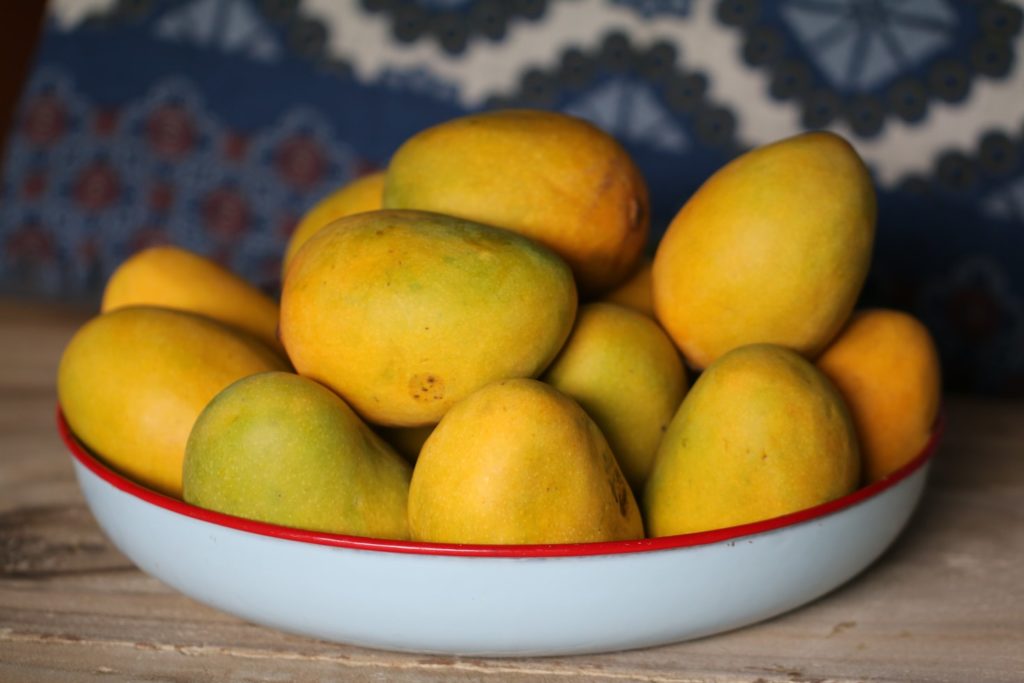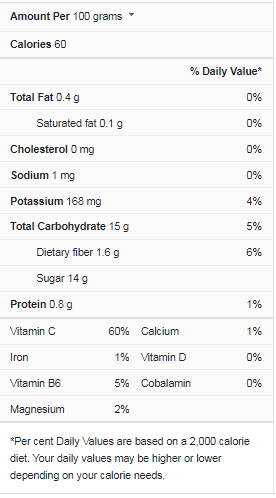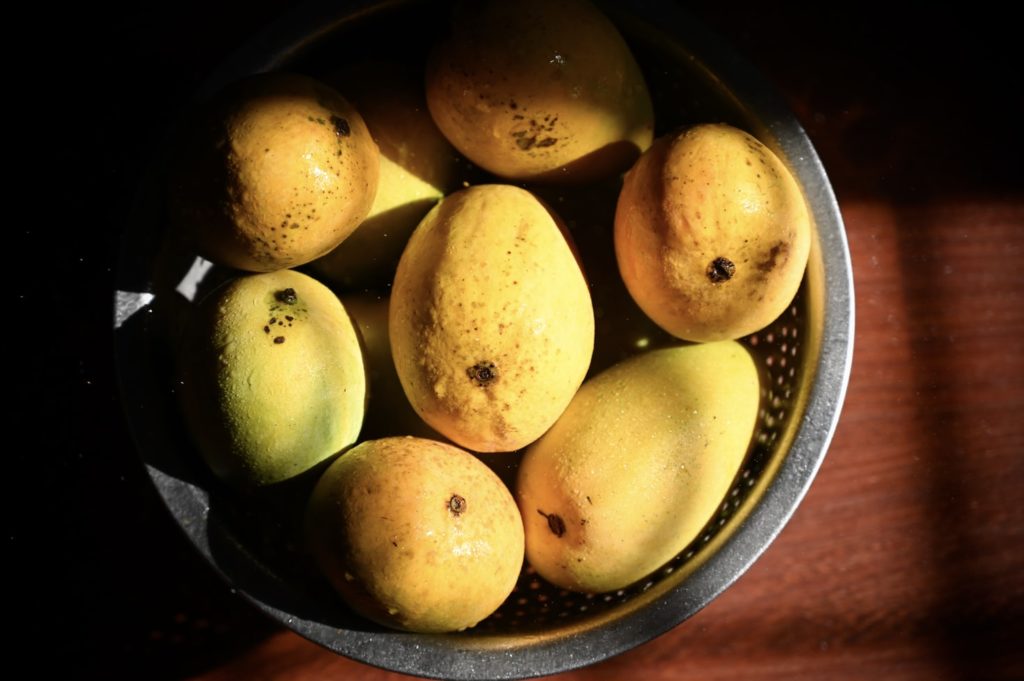Mangos are an excellent tropical fruit whether eaten plain, juiced, or incorporated into your favorite cuisines. You might not know how to determine if a mango is ripe if you’ve never tasted one before. Fortunately, there are a few indicators you can check for to determine whether your mango is ripe, including its appearance and feel. To know how to tell when a mango is bad read further them.

Mango Nutrition Fact
How to Tell When A Mango is Bad?
Mangoes are lovely tropical fruits that can be consumed simply in a juice, shake, or smoothie or added to various recipes.
They’ve been around for a long time and come in over 500 different types in different parts of the world.
They’re low in calories and high in essential nutrients like vitamin C, which enhance immunity and growth.
Like any other fruit, Mangoes have a finite shelf life and spoil if not stored properly and consumed within a set period.
It can be challenging to tell if a mango is ripe, overripe, or has gone rotten if you’ve never eaten one before. Fortunately, there are a few easy ways to identify if a mango is poor and avoid an unpleasant experience.
Overripe Mango Warning Signs
- Changes in texture, appearance, smell, and color are clear indicators that mango has gone rotten.
- When determining ripeness, the first thing to consider is how the fruit feels in your hand. If it feels good to the touch, but the color isn’t quite there yet, don’t be alarmed; it’s still ripe.
Texture
- Grip the mango at the top, near the stem, to inspect the texture with your fingertips. To test how soft it is, apply gentle pressure.
- The mango is ripe and ready to eat if it gives a little. If a light press pierces the fruit, it is overripe.
- It’s also worth noting that ripe mangoes frequently develop wrinkles on their skin. When they get overripe and begin to rot, the wrinkles deepen and cover a significant section of the fruit.
- You may check for wrinkles by lightly rubbing your hands on the mango’s surface and feeling its skin for any strange signals.
Appearance
- Mangoes are perfectly typical to have a few brown patches and speckles. They can occasionally signal that the mangoes are ripe and ready to eat.
- The issue develops when they grow huge black patches that persist deep into the body.
- It’s advisable to toss the mango if you see liquid pouring from the damaged skin. Mold is also a sign that your mango is terrible, and you now know what to do with it (throw it out).
- When you cut an overripe mango open, you’ll notice that the inside is spongy to the touch and has a different, deeper hue than other ripe mangoes.
Smell
- The fragrance of mango might help you determine how ripe it is. Giving it a good whiff near the stem area is the best approach to check its smell because it is more pungent and will give you a better picture of how the mango genuinely smells.
- If the mango has a strong, fruity, and sweet aroma, it will likely be fully ripened and ready to consume.
- However, if it smells sour, alcoholic, or even somewhat bitter, it’s a sure sign that the mango is overripe and decomposing.
- Mangoes have a pungent odor as they begin to go wrong due to their high sugar content, which causes them to ferment naturally, making an overripe mango taste as horrible as it smells.
Color
- Mangoes come in various colors, including green, yellow, orange, red, and purple. The hue of a ripe mango varies depending on the mango variety.
- As previously said, there are over 500 different varieties of mangoes found around the world, each of which has a distinct color when ripe and ready to eat.
- Certain kinds may remain green when ripe, while others may become a bright yellow or deep orange.
How Should Mangoes Be Stored?
It all relies on whether the mangoes are ripe or unripe when keeping them properly.
It is recommended to store immature mangoes at room temperature. You can either place them in a paper bag or leave them in a fruit basket on the counter.
Whatever you choose, make sure the mangoes aren’t exposed to direct sunlight.
If you need to speed up the ripening process, the paper bag method comes in handy. It helps trap the ethylene gas produced by the mango, which aids in the fruit’s maturation.
You can also add any other fruit or vegetable that emits ethylene gas to the paper bag with the mangoes to speed things up.
Tomatoes, avocados, apples, and bananas are all excellent options. Remember to inspect the mangoes every day or two; because mangoes continue to ripen at room temperature, it’s best to put them in the fridge after they’re ripe, where they’ll last 5 to 14 days.
Make sure to store sliced and diced mangoes in an airtight container in the refrigerator for a couple of days.
Is it Possible to Freeze Mangoes?
Yes, you certainly can. Frozen mangoes are easy to get by in the shop, and there’s no reason you can’t make them at home.
If you want to keep your mangoes for a more extended period, place them in the freezer for up to 6 months. Here’s how to do it:
Depending on your desire and how you plan to use the mangoes after defrosting, wash, peel, and cut them into cubes, slices, or strips.
Place the mango pieces on top of a baking sheet lined with a silicone mat or parchment paper, or any shallow dish, in a way that they don’t touch.
Place the sheet or dish in the freezer to solidify the mangoes, preferably overnight.
Transfer the frozen mangoes to freezer bags, seal them tightly to remove as much air as possible, and label them with the date for later use.
Is it Possible to Consume Overripe Mangoes?
Although overripe mangoes are not the prettiest, they can still be eaten before their prime.
Of course, personal preference plays a role; what is overly ripe for one person may be just right for another.
It’s critical to distinguish between an overripe mango and a spoiled mango. Slightly overripe mangoes can be used in smoothies, as a puree, in desserts, or the preparation of excellent mango jam or chutney.
Could you give them a taste test before using your overripe mangoes in a dish? You can remove a portion of a mango that is too ripe to eat and utilize the rest of the fruit instead.
Just keep an eye out for mushy mangoes and those with noticeable brown or black blemishes. Also, seeping liquid and mold growth are red flags that rotten mango.
Is it Harmful if the Inside of the Mango is Brown?
A dietary issue could have also caused the discoloration. This mango isn’t poisonous; it just doesn’t taste perfect. According to Jeffrey Brecht, a postharvest plant biologist at the University of Florida, “That’s a coin toss.”
The fruit’s somewhat dark flesh indicates that it has begun to rot on the inside.
It should be safe to consume if the flesh still smells sweaty and mango-like.’ It’s advisable to toss it out if it smells off or like cleaning fluid.
Conclusion
Besides a foul odor and smell, other signs indicate a mango is overripe. Suppose the mango’s outer skin has brown patches or bruises. If it has mold, it’s not a good mango. If the fruit is sour, it’s overripe. Its skin has wrinkles, which will show if the fruit is overripe.
In addition to mold, there are some other signs of a rotten mango. The skin should be soft and hollow, with juice that comes out of it. It should be firm and not have wrinkles. The skin should be yellow or red to be easier to peel. A sour mango is likely overripe. The fruit has the smell of mango juice, and it is usually overripe.




